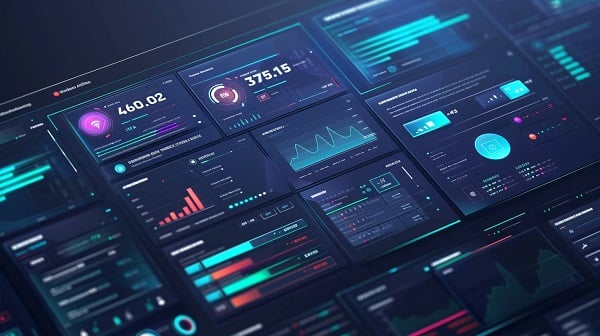Web Crawling vs Scraping: Differences & Proxy Tips
Explore how web crawling and web scraping differ, and learn proxy best practices for reliable, large-scale data collection.
Apr 22, 2025
Discover how ad verification safeguards digital advertising investments from fraud and misplacement with advanced proxy tools, real-time analytics, and industry best practices.
Billions of dollars are spent across programmatic platforms and real-time bidding exchanges, but one question may continue to haunt advertisers: Are my ads actually being seen by real people, in the right places, and in brand-safe environments? This is where ad verification steps in. Whether you’re a media buyer, brand manager, or running programmatic campaigns, ad verification ensures your ads appear in the right place, to the right people, and in the right context.
In this guide, we’ll explain what ad verification is, why it matters, how it works, and how proxies help validate ads, 2025 top tools and strategies, and beyond.

Ad verification is the process of validating that digital ads appear as intended across various platforms and devices. Its primary goals include:
Geo-Targeting Accuracy: Ensuring ads display in the correct geographic regions.
Inventory Quality: Confirming that ads appear on approved and brand-safe websites or apps.
Viewability: Verifying that ads are visible to real, human users—not merely served.
Fraud Protection: Detecting and filtering out fraudulent impressions generated by bots or click farms.
By using sophisticated third-party tools, scripts, and tracking pixels, ad verification monitors ad performance in real time or post-delivery. It assesses key metrics like brand safety, viewability, geography, and traffic source to guarantee that your advertising dollars reach genuine audiences.
Ad verification is used across the digital advertising supply chain:
Brands and Advertisers: To protect their investment and brand image.
Media Agencies: To optimize campaign performance and reporting accuracy.
Ad Networks & DSPs: To maintain transparency with clients.
Publishers: To prove inventory quality to advertisers.
The digital ad ecosystem is complex, fragmented, and unfortunately, vulnerable to manipulation. Without ad verification in place, advertisers risk wasting budget on fraudulent impressions or damaging their brand reputation by appearing next to inappropriate content.
Ad fraud costs advertisers over $60 billion annually. Common types include fake impressions from bots, spoofed domains, and click farms. Ad verification tools detect invalid traffic and prevent your budget from being wasted on non-human impressions.
Ads placed next to inappropriate, controversial, or fake content can damage your brand's reputation. Verification ensures your ads don’t appear on hate speech or adult sites, fake news platforms, or pirated content.
An ad loads on a page doesn’t mean it’s seen. Verification platforms measure viewability, such as whether 50% of the ad was in view for at least 1 second (per IAB standards).
If you’re paying for impressions in New York but your ads are showing up in Indonesia, that’s a serious problem. Ad verification ensures that your geo-targeting settings are respected, which is where proxies become crucial (more on that later).
By filtering fake impressions and low-quality placements, your ROAS (Return on Ad Spend) can significantly improve, especially for high-volume campaigns.
Ad verification operates through a combination of scripts, tracking pixels, and third-party monitoring systems. These tools are typically integrated into the ad tags or served alongside the creative by demand-side platforms (DSPs) or ad servers. Below is a simplified breakdown of the process:
When an ad is served, a verification tag (JavaScript or pixel) is embedded into the ad creative.
As the ad loads on a user’s browser or app, the verification tag collects data about page content, domain authenticity, user location, viewability metrics, and traffic source.
The collected data is sent back to the verification provider’s server for analysis.
If any discrepancies are found — such as a mismatch in geo-location, non-human traffic, or unsafe content — alerts are generated and logged in the campaign dashboard.
Some platforms even allow for real-time blocking, ensuring that ads are prevented from showing if the environment doesn’t meet predefined standards.
Ensures that ads are seen by real users, not just served. For example, an ad below the fold might be served but never seen. Verification tools detect this.
Identifies non-human traffic, bot clicks, and domain spoofing.
Confirms that ads are visible in targeted regions or markets. This is crucial for compliance in localized campaigns or country-specific offers.
Analyzes the surrounding content where the ad appears. For instance, a family-friendly brand doesn’t want ads appearing on NSFW content.
Validates ads appear in correct placements (e.g., above-the-fold), preventing ads from being hidden or rendered in non-visible areas.
To maximize the value of your verification efforts, follow:
Choose reputable proxy providers that offer:
This ensures accurate location testing without detection.
Use machine learning tools for scalable fraud detection, but always review flagged data manually before taking action.
Establish baseline metrics for normal engagement patterns and set up alerts for deviations, especially for geo-based anomalies.
Work with third-party platforms like DoubleVerify, IAS, or HUMAN Security to add credibility and technical depth to your campaigns.
Provide detailed reports to stakeholders on where ads appeared, who saw them, and how they performed — backed by verified data.
These vendors integrate seamlessly with major DSPs and SSPs, offering enterprise-grade protection and analytics.
DV remains a heavyweight in the ad verification space. Known for real-time blocking, fraud detection, and viewability.
IAS is another titan, known for contextual targeting and invalid traffic filtering.
HUMAN Security rounds out the top tier, known for bot mitigation and pre-bid fraud detection.
The field of ad verification is rapidly evolving as new technologies and trends emerge. Key developments include:
Machine learning models now analyze billions of data points to detect new fraud patterns in real time.
Modern proxy services offer rotating IPs, residential and mobile options, and custom geo-targeting. Perfect for precise ad verification across regions and devices.
Advertisers now use live dashboards powered by proxy data to monitor campaign health minute-by-minute.
Blockchain is being explored to create immutable records of ad transactions — improving trust across the ecosystem.

Proxies serve as intermediaries between end users and web servers, masking the true IP address and simulating access from different geographic locations. In the context of ad verification, proxies are used to validate geo-targeting, bypass spoofing techniques, and support real-time analytics.
When an ad is served, a verification tag (such as JavaScript or a tracking pixel) collects data on page content, user location, domain authenticity, and viewability metrics. This data is then transmitted via proxy servers to the verification provider’s analytics platform. Proxies ensure that the location and engagement data are accurate, especially in campaigns with strong geo-targeting elements.
Modern proxy solutions—particularly rotating residential proxies—offer high anonymity and extensive IP pools. These features are vital for detecting non-human traffic, maintaining data integrity, and improving campaign transparency.
Running ads without ad verification is like buying a billboard blindfolded — you don’t know who’s seeing it, where it’s placed, or if it’s working at all. With ad fraud and brand safety concerns at an all-time high, ad verification isn’t optional — it’s essential. By combining smart tools with advanced proxy technology, advertisers can ensure transparency, protect their budgets, and deliver meaningful results.
Ready to level up your ad verification?
Try our high-purity rotating residential proxies — free for 7 days — and see how accurate geo-verification should really work. Mobile proxies are also available for mobile advertising.
< Previous
Next >
 Cancel anytime
Cancel anytime No credit card required
No credit card required